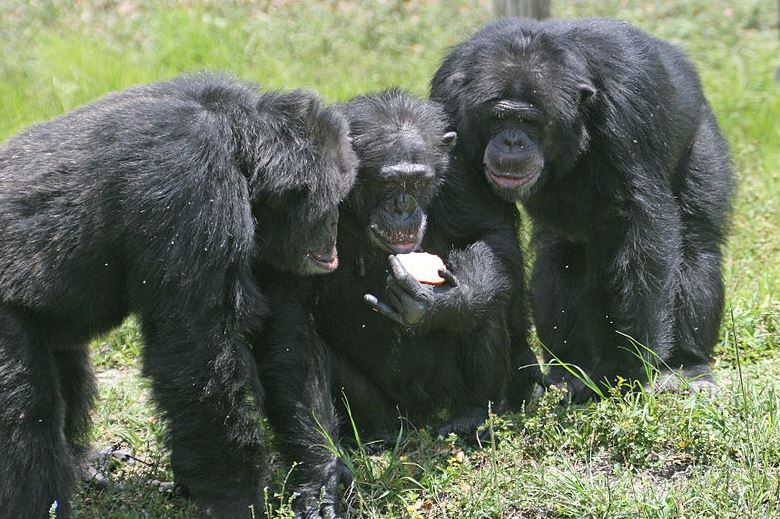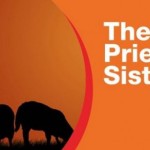Do animals have morality?
Christians and biologists have often, mistakenly, seen themselves as rivals. Both have argued as if there is a choice between science or religion: biology or revelation as sources of knowledge; evolution or God as explanations of our existence; ecology or salvation as giving meaning to our history; concern for animals or concern for humans as generating values; biological or spiritual descriptions as accounts of ourselves. However, as is often the case, the Catholic position on this is characterised by ‘and’, not ‘or’. We need reason and faith; divine, primary, and created, secondary causes; natural and religious history; green ideals and humanitarian ones; and an understanding of human beings, of ourselves, as intelligent animals who are also capax Dei, open to God.
I have just finished an excellent book by Dale Peterson called The Moral Lives of Animals (Bloomsbury Press 2011). Its thesis is straightforward: through Darwinian natural selection, a wide range of animals (including birds and reptiles) have evolved lives that are socially cooperative in structured but flexible ways, ways that bear such close resemblance to human morality that they deserve to be called ‘moral’. Peterson illustrates the thesis with a wealth of fascinating and compelling details. He also organises the book in an intriguing way, relating his topics to the Ten Commandments. So, for example, ‘Love the Lord your God’ and ‘Honour your parents’ are the human equivalents of the tendency of social animals to recognise authority; ‘Do not kill’ and ‘Do not lie’ correspond to natural constraints upon violent or deceptive behaviour.
In other words, Richard Dawkins’ big biological idea, the ‘selfish gene’, is half-right. Peterson accepts that those genes that produce characteristics which are more competitive in evolutionary terms will enable themselves to be reproduced more frequently in subsequent generations. Genes are ‘interested’ only in the survival of genes identical to themselves. So ‘selfish’ genes come to predominate. Dawkins argues from this that nature therefore produces selfish individuals. Peterson points out the flaw in this. Since cooperative behaviour gives organisms an overall evolutionary advantage, then ‘selfish’ genes produce unselfish lizards or finches or elephants.
The evidence for rule-governed yet often creative social behaviour is massive and wide-ranging. It is provided in large part by half a century and more of fieldwork led by pioneers such as Konrad Lorenz and Jane Goodall, which follows Darwin’s method of careful observation of individual species living their ordinary lives. This has been supplemented both by artificially arranged experiments and, more recently, by neuro-scientific studies of brain activity. All social animals, for instance, have systems of dominance, which mean that fighting is relatively rare. For those that live in families, such as wolves, this works simply: the older automatically dominate the younger. In larger groups, the strongest one will usually lead, and one of the roles of an alpha male is precisely to keep the peace: a capable boar can dramatically reduce fighting among young pigs. Cannabalism and incest are very rare among, say, chimps, and are liable to cause a shocked reaction in others. Dolphins recognise that the catcher of a fish has a right to eat it; one of them can even safely show off his prize catch to the others. Dogs and baboons share with human beings the capacity to draw the attention of others to something by gazing at it, and chimpanzees at least certainly use this skill to deceive. In the first recorded case of a chimp using sign language to lie, when she was caught out, she appropriately signed, ‘sorry’.
The evidence from behaviour is corroborated fascinatingly by neuro-science. For example, some animal species and most birds form stable pairs, and use bonding rituals to strengthen these and threats against those who break them. Neuroscientists have discovered that behaviour associated with pair-bonding is linked to three areas of the brain, which seem to relate to (a) the desire to mate; (b) strong attraction to a particular individual (greylag geese fall for one another in a way quite recognisable to human beings!); and (c) an enduring sense of attachment. If you’ve got all three, then it’s true love! In other words, individual brains correspond to and mutually reinforce social practices; culture meshes with nature. Peterson uses the term ‘psychosocial’ to refer to this intriguing combination of elements that produces a biological basis for morality.
A striking feature of much of the evidence is the close similarity between human and animal behaviour. A dog or an elephant, just like a praying Muslim or a respectful diplomat, acknowledges one in authority by turning to face him and lowering his own posture; a lioness or a monkey, just like a human mother, reassures a frightened youngster by caressing her; kangaroos and dolphins take it in turns, and avoid hurting one another, when they play. As with human beings, many animals engage in cooperative violence to protect their own group against outsiders; as with human beings, uncontrolled violence within a community is a disconcerting exception. Many species ‘trade’ mutual favours such as grooming or feeding, and keep a record in their memory of what is ‘owed’. Some individuals of some species are capable of spectacularly unselfish behaviour, such as the she-elephant who unintentionally broke the leg of a Kenyan camel herder and then gently propped the wounded man upright and guarded him against danger for a full day and night until help arrived, gently checking on him with her trunk from time to time.
But was the elephant being unselfish in the fullest sense of the word? Was she really displaying morality? Many thinkers, Christian and otherwise, have been eager to drive a wedge here between human beings and animals. Often, their arguments have been based on ignorance. In recent decades we have come to know incomparably more about animals, if we are open to learning. The evidence here demolishes any black-and-white contrast between intelligent human beings and dumb, or mechanistic, animals. Yet we may still hesitate. Peterson argues that animal ‘morality’ is just morality, in large part because he believes that morality is no more than emotions and feelings. He shares a respectable philosophical tradition that grounds ethics in ‘moral sentiment’ rather than impartial reason.
The mainstream Catholic Christian tradition, however, has always united the two: virtues require both well used reason and well ordered emotions. Perhaps, then, there is not so much a sharp distinction here as a spectrum. We can see everywhere in the animal kingdom behaviour that is recognizably like our own instinctive and our own emotional behaviour. Sometimes we can even glimpse something more sophisticated: self-awareness, reflectiveness, even deliberation. Both reason and freedom come in degrees. With human beings – with the advent of grammatical language, thoughtful questioning, the entertaining of a flexible range of future possibilities, the capacity to imagine oneself in another’s shoes, the capacity to allow reason to expand our natural sympathies for our close kin – with these, the nature as well as the degree of freedom, reason and compassion shifts. It is only now that a capacity to envisage and respond to transcendence enters the sublunary world: the first three of the human Ten Commandments recognise the authority not just of more powerful animals, but of God. Peterson recognises most of these differences, and holds that each species has its own distinctive morality. More traditionally, we might want to reserve the term ‘morality’ for good systems of reflective human behaviour, on the grounds that reason is integral to them. However, we can agree on the essential fact: the raw material for our human moral reflection is inherited from our evolutionary past, and much of it is widely shared, in very different ways, with a vast range of different species.
Peterson himself is respectful of religion but ultimately seems to want to explain it away. His picture of Christianity is a broadly Protestant one, tending to assume the pairs of ‘either/or’ with which I began. I am myself not sure whether Darwinian natural selection can in fact do the whole job of explanation that he wants. The more amazing the evidence he produces for the complex, subtle and flexible forms of animal living, the harder I find it to believe that all this just came about, even on the level of purely scientific explanation, by chance. But if that is a problem, it is a problem for the agnostic biologist, not for the Christian. Christians have no need to fear if Peterson is correct. They can simply welcome the generosity of the Creator in using so imaginative a method of secondary causation to bring forth the rich possibilities of affectionate, courageous and restrained social living, such as can develop even into wisdom, justice, and systematic compassion for strangers in need.
Peterson’s chapters on the Ten Commandments of the animal kingdom, as it were, which are entitled ‘authority’, ‘violence’, ‘sex’, ‘possession’ and ‘communication’, are followed by chapters on attachment and kindness. He goes on to contrast law-based morality with a morality of attachment, the ‘right’ with the ‘good’. Using a fascinating account of elephant society, where males and females largely live in separate groups, he suggestively associates law and rights with a more masculine way of thinking, attachment with a more feminine one. (I hasten to add that the way in which he does this is anything but sweeping, simplistic or disrespectful.) The suggestion is thought-provoking, but once again, the Catholic instinct will be to reach for the word ‘and’. St Thomas Aquinas’ ethics, for example, is based on a close integration of goodness and law, worked out in terms of the virtues. A contemporary, and highly relevant, example is the Vatican document The Bible and Morality, which explains each of the Ten Commandments in terms of the positive values which they promote and protect – Peterson’s ‘attachment’ and ‘kindness’ are not too distant from this.[1]
Peterson ends with an intriguing speculation. What, he asks, will be the long-term effect of the social revolution which is turning the human race from patriarchy to, if not matriarchy, perhaps ‘isarchy’ – the equal sharing of power among men and women? He hopes that this will imbue politics with feminine ideals such as support for child-care and greater freedom of women’s choice. Those Catholics who are tempted to bristle when he includes abortion in his feminine ideals should take care how they respond. Surely Peterson is not wrong in his hope that a greater share of authority for women might make us politically and personally gentler; his mistake is to see abortion as even potentially in accordance with genuinely feminine and maternal instincts.
Peterson’s hope for a more peaceful world, and in particular for a vast improvement of the way in which human beings treat other, especially large, animals, is admirable. It also shows, however, that his own theory is ultimately inadequate. He wants to say that the mass slaughter of elephants by hunters is a bad thing. But if our morality is no more than the product of our genes, expressed in emotional and social rituals, then the beliefs and practices of the conservationist are no better, no truer, no more authoritative, than those of the big-game hunters. There is no truth beyond feeling to which he can point in order to argue his case. That is why morality needs more than sentiment, and why the morality (or ‘morality’) of bats and baboons and even bonobos is qualitatively different from our own.
Animals cannot choose to resist their instinct to defend their territories. Human beings, by contrast, can, and in the area of knowledge normally should. Instead of polarising our positions – religion or science, reason or emotion, ours or yours – we can gratefully learn from one another. Indeed, books such as this one provide a rich resource for Catholics who want to think seriously about human nature and the common basis of human morality. A second Vatican document, this one about natural law, explicitly invites Catholics to learn through open-minded dialogue from the wisdom of other traditions [2]. The biological tradition that rightly honours Charles Darwin is one good place to start
[1] Pontifical Biblical Commission, 2008, especially sections 29-31. Although the elucidation in 31 is couched in terms of ‘rights’, such rights are clearly understood as subordinate to goods.
[2] In Search of a Universal Ethic: A New Look at the Natural Law, International Theological Commission, 2012, 113-116.
Tags: animal consciousness, animal morality, evolution, featured



















Beautifully expressed review. I am grateful for this exposition since I teach courses related to environmental ethics. Animal rights are a basic part of the course so this review encourages
me to order Peterson’s book for further study. Another book “Intelligence in Nature” by Narby has been
one of the more helpful texts for my classroom and it may be that Peterson’s book will be a helpful
supplement.